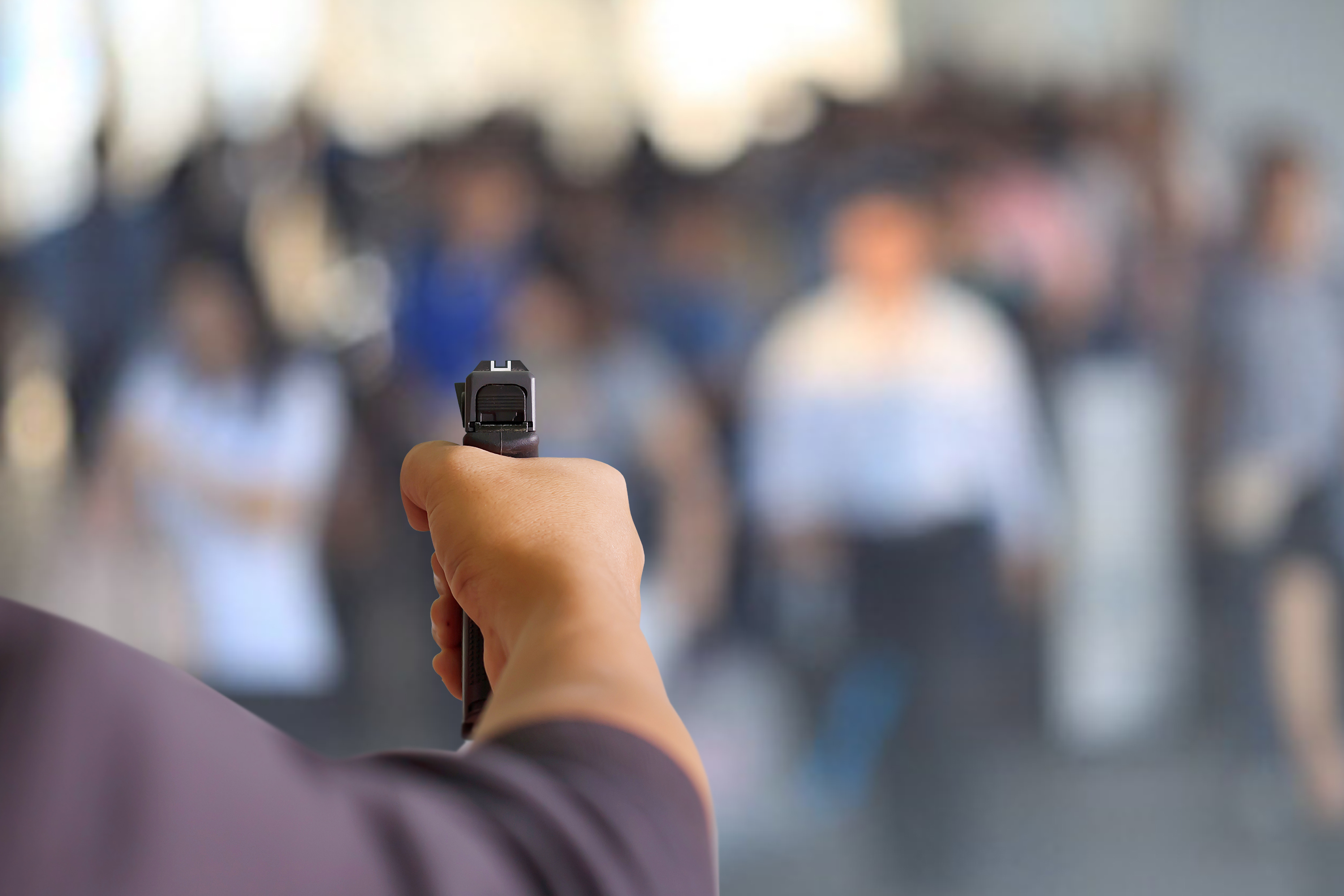
David Kennedy spent much of the mid-1990s in open-air crack markets in Boston. “The kind of place white guys usually don’t get to,” said Kennedy.
He was there, he made sure to point out, in a professional capacity – as a researcher with the Kennedy School of Government at Harvard University. He also went on ride-alongs with police and talked with street outreach workers, grandmothers and clergy. He says he figured out a way to end gun violence.
Kennedy came to Oakland to share the lessons he learned and promote his book, Don’t Shoot, to a crowd of about 250 people at the First Unitarian Church of Oakland.
When Kennedy first started his research, the common perception was that Boston’s gun violence problem was huge and amorphous. But Kennedy found that the violence followed a clear pattern.
Street outreach workers told him that it was gang kids killing other gang kids.
These young men aren’t organized crime operations, Kennedy cautioned. Mainly they’re crews of drug dealers, he said. There were 61 drug crews with about 1,300 members among them in Boston in the 1990s. This meant that only 1 percent of the young men in Boston were involved in the majority of the killing in the city.
He also learned that the killings weren’t necessarily drug-related. They could usually be traced back to something personal, where someone felt disrespected or suffered a bruised ego.
“There is no stupider organism on the planet than a young man with his friends watching,” Kennedy said.
Talking to the kids involved in the gun violence revealed too that they were actually scared, Kennedy said. They felt like no one would protect them but their friends and nothing could protect them but their guns.
Kennedy identified three different groups of people affected by the violence. He spoke with community members of violent neighborhoods and described mothers who put their children to bed in bathtubs to protect them from stray bullets. They wanted the violence to stop, but didn’t feel they could work with the police or members of the drug crews.
Police officers felt a similar futility – they knew their policing methods weren’t ending the violence. They wanted to find a new method.
And the guys in the drug crews had even more at stake, Kennedy said. They were the ones who had lost a third of their friends to gun violence and who had a one in 66 chance of being killed themselves.
“You’d be better off in any war that’d ever been fought,” Kennedy noted.
So in May 1996, Kennedy and others from the Boston Police Department, prosecutors, probation officers and federal agencies brought the guys they knew to be involved in gun violence to a meeting in a Boston courtroom.
“The violence stops now,” they said.
They told the guys to imagine how the police force reacts when a cop is killed. “Hurting you is now like hurting a cop,” Kennedy said.
Outreach worker Tracy Litthcut also offered to help. “If you need protection from your enemies, if you want a job, if your mom needs treatment, if you want back into school, tell us; here’s my phone number,” Litthcut told them.
But a failure to change their ways would mean stiff penalties. “We can bring in the DEA, we can bring in the FBI, we can bring in the ATF,” Assistant U.S. Attorney Ted Heinrich told them. “We can prosecute you federally, which means you go to Lompoc, not stateside, and there’s no parole in the Federal system any more – you serve your time.”
After an initial crackdown, there wasn’t a single youth homicide in Boston for two and a half years.
This model, often called Ceasefire, has now spread to more than 70 cities around the world. It is in various stages of implementation in Oakland, Union City, Richmond and other cities throughout California.
Oakland Police Department Captain Joyner said Oakland has tried to use some of the Ceasefire ideas in the past, but they made the mistake of not fully implementing it the first time they tried. Now they are trying it again.
The main lesson of the program has been that you can’t implement Ceasefire half-way, Kennedy said. Ceasefire has to be at the core of police and community anti-violence work. What happened after the original Operation Ceasefire is often called the “Boston Miracle.”
Boston made the mistake of treating it like a miracle, Kennedy said, and stopped implementing the program. Youth homicides started again in the city.
“Anything you call a program is going to go away,” Kennedy said.
Nothing will end gun violence unless it involves the three communities involved: the cops, the drug-crews and the community members, he added.
The Tuesday evening Kennedy spoke coincided with an Oakland City Council Meeting about gang injunctions and youth curfews. Still, the room was full of workers from the Oakland Police and Fire Departments, street outreach workers, Richmond’s Office of Neighborhood Safety, Alameda County Probation Department, human service providers, clergy, concerned community members and a group of young men from Alameda County Probation Department’s Camp Sweeney.
Alameda County Chief Probation Officer David Muhammad attended too, and left hopeful. “With the people in this room,” he said, “we could stem the violence.”





